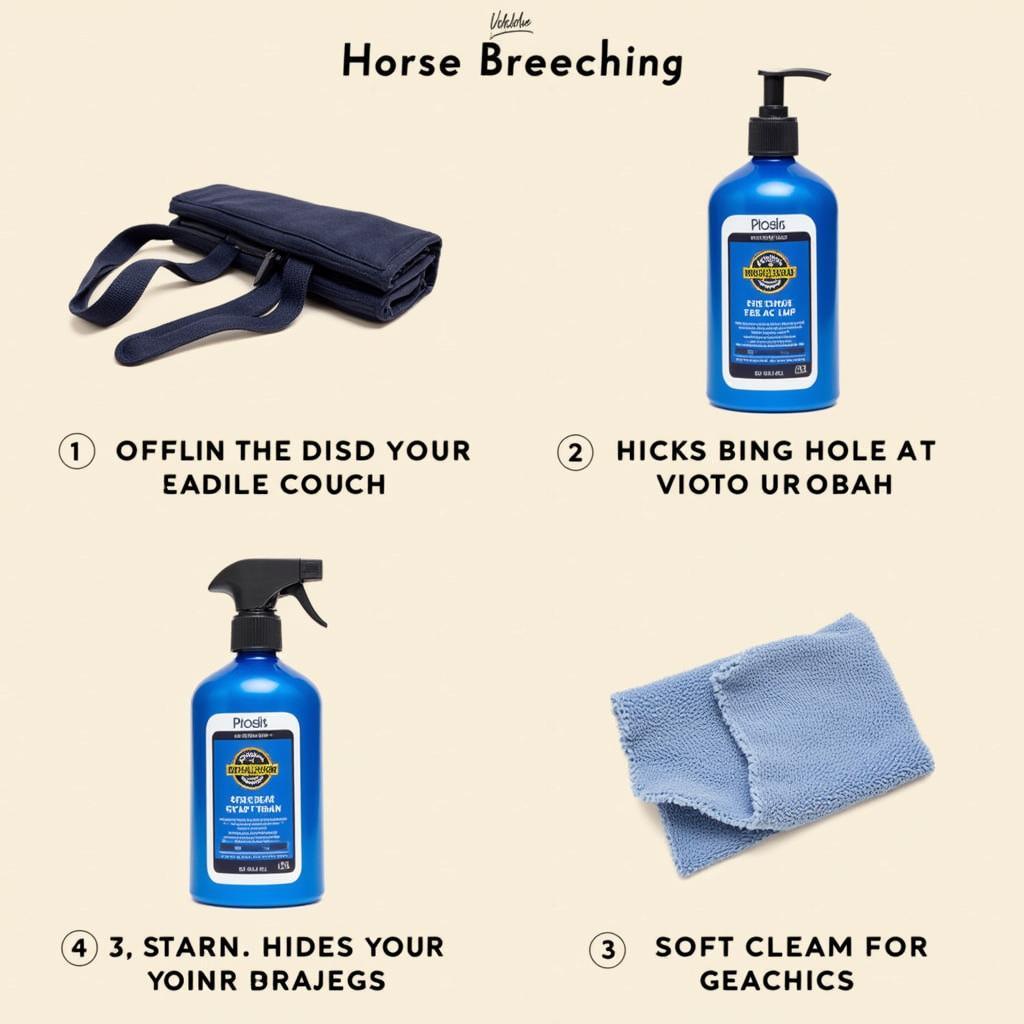Horse Breeching is a vital component of driving harnesses, designed to help control and slow a horse, particularly when going downhill or stopping. It’s a crucial part of the harness that sits around the horse’s hindquarters, distributing pressure and preventing the cart from pushing against the horse. Understanding its function, types, and proper fit is essential for any driver.
The Importance of Horse Breeching
Why is horse breeching so important? Simply put, it provides control and balance. Imagine going downhill with a heavy load behind you – without something to brace against, you’d be pushed forward uncontrollably. The breeching acts as that brace for the horse, allowing them to lean back against the cart and maintain balance. It also plays a critical role in stopping, allowing the horse to use its powerful hindquarters to slow or halt the vehicle.
When choosing a driving harness horse , understanding the function of the breeching is paramount. It directly impacts the horse’s comfort and safety, and ultimately, your ability to control the animal effectively.
Types of Horse Breeching
There are several types of horse breeching, each with its own advantages and disadvantages. The most common types include:
- Full Breeching: This type provides maximum control and is ideal for heavy loads or hilly terrain. It consists of a wide strap across the buttocks and two hip straps that connect to the shafts of the cart.
- Half Breeching: A simpler design suited for lighter loads and flatter ground. It consists of a single strap across the buttocks and connects to the shafts further forward.
- Loop Breeching: Often used in racing or show driving, this type offers less braking power but allows for greater freedom of movement.
How to Fit Horse Breeching Correctly
A properly fitted horse breeching is essential for comfort and effectiveness. It should sit comfortably around the horse’s hindquarters without being too tight or too loose.
- Check the breeching straps: Ensure they aren’t rubbing against the horse’s skin or creating pressure points.
- Consider the horse’s conformation: Different horses require different breeching styles and adjustments based on their build.
- Adjust the buckles: Make sure the breeching is snug but allows for comfortable movement. A good rule of thumb is to be able to fit a hand’s breadth between the breeching and the horse’s buttocks.
Common Problems with Horse Breeching
Ill-fitting or poorly maintained horse harnesses for sale can lead to several problems, including:
- Sores and chafing: Tight or rubbing breeching can cause painful sores.
- Uneven pressure: This can lead to discomfort and difficulty moving.
- Reduced control: A loose breeching can compromise the driver’s control, especially during braking.
John Smith, a renowned equine veterinarian, advises, “Regularly inspecting your horse’s breeching is crucial. Look for signs of wear and tear, and address any issues promptly to ensure your horse’s comfort and safety.”
Maintaining Your Horse Breeching
Keeping your harness parts for horses in good condition is essential for its longevity and effectiveness. Regularly clean the breeching with saddle soap and condition the leather to keep it supple. Inspect for any cracks or damage, and replace worn parts as needed.
 Cleaning and Maintaining Horse Breeching
Cleaning and Maintaining Horse Breeching
Jane Doe, an experienced carriage driver, adds, “Proper storage is key to maintaining your breeching. Store it in a cool, dry place away from direct sunlight to prevent the leather from drying out and cracking.”
Conclusion
Understanding and properly using horse breeching is fundamental for safe and comfortable driving. By choosing the correct type, ensuring a proper fit, and maintaining the equipment, you’ll ensure a positive experience for both you and your horse.
FAQ
- What is the purpose of horse breeching? It allows the horse to brace against the cart and provides braking power.
- What are the different types of breeching? Full, half, and loop breeching are common types.
- How do I fit breeching correctly? Ensure a snug fit without rubbing or creating pressure points.
If you need assistance, please contact us at Phone Number: 0772127271, Email: [email protected] or visit our address: QGM2+WX2, Vị Trung, Vị Thuỷ, Hậu Giang, Việt Nam. We have a 24/7 customer support team.